Single Loaf Bread in a Stand Mixer
Make a single loaf of bread in a stand mixer for just the right size batch with minimal effort. Tender and flavorful, this classic white bread can be made with a little bit of whole wheat flour or flavored with herbs and cheese. It’s a classic!

The smell of a classic loaf of bread is something that every new baker wants to tackle. And you should.
As a beginner the Dabbler team always recommends starting with recipes that you can get your hands in first. That way you can learn how dough should feel and look before you let a stand mixer take the lead.
But it looks like you’re ready.
Here’s what you need to know more than anything else when making loaf bread with a stand mixer:
Mixers are good at overworking dough quickly. Make sure to pay attention to what’s happening in your bowl and check your single loaf often during mixing to look for proper gluten development.
Two minutes of knead time with a stand mixer is equal to 10-12 minutes by hand.
Can all purpose flour be substituted for bread flour?
It can. You will need to knead the dough longer to reach window pane because all purpose flour has less gluten.
Can I make this single loaf with whole wheat flour?
You can substitute half the white flour for whole wheat, but not all of it. You’d need a recipe written exclusively for whole wheat to do that.
I only have instant yeast. Can I use it?
Yes you can. I always recommend that beginners activate their yeast just like active dry. Instant yeast can be added directly to the flour, but most beginners fail to warm the flour and other liquid ingredients and this results in a failed loaf. Instead, just add it to water and move on once it foams.
Why is there egg in this recipe? Can I leave it out?
Eggs provide rise and moisture in breads. There have been some readers who have left the egg out and had good results. You are welcome to give it a try, though I encourage you to use it if you can.

How to build more flavor in to your single stand mixer loaf bread
If you are craving a super yeasty flavor, feel free to do your rises in the fridge. The longer a dough can sit, the more yeast flavor it will have. Place your mixer bowl in the refrigerator until the dough doubles–maybe 4 to 6 hours.
I don’t recommend leaving it overnight because commercial yeast can actually digest the gluten and leave you with a big soupy mess.
Your second rise can also be done in a cool location for further flavor development.
Ideas for flavor variations
This dough is versatile! Shape it in to rolls and tuck them in a round cake pan to rise or make cloverleaf or other shapes. Check out these 9 Ways to Shape Dinner Rolls.
Cinnamon sugar or cinnamon raisin
When pressing the dough into a rectangle for the loaf pan, spread the dough with a bit of butter and sprinkle on a mixture of 3 tablespoons sugar and 1 teaspoon cinnamon. Raisins could also be added here. Then roll up and rise as usual.
Cinnamon Rolls
Spread the dough with butter and cinnamon sugar as listed above, adding in two tablespoons brown sugar. Roll the dough and cut slices 1-2 inches thick. Lay flat in a greased baking dish and let rise; bake as instructed cutting the bake time to about 20 minutes.
Raisins or Nuts
Knead in raisins or nuts in after you reach window pane. Add 3/4 cup to 1 cup depending on preference and mix a few seconds to distribute them.
Cheese, Garlic and Herbs
Work these in to the dough for a few seconds after reaching window pane. A blend of 3/4 cup parmesan or white cheddar, and roasted garlic would be delicious!
Other ideas include olives, sun dried tomatoes, jalapenos and cheddar cheese chunks–so many great ideas!
Adding ingredients means a slower rise time
Remember that adding other ingredients to your dough also adds weight. That means your dough will need more time to “lift” those ingredients as it rises so plan for rise times to take longer.

Single Loaf Bread in a Stand Mixer
Equipment
- Stand Mixer
Ingredients
- 1 cup warm water 216 grams , 110 to 115 degrees
- 2 1/4 teaspoons active dry yeast 7 grams/1 packet
- 3 tablespoons sugar 50 grams
- 1 egg
- 2 tablespoons flavorless oil 20 grams, avocado or vegetable oil
- 3 1/2 cups bread flour 470 grams
- 3/4 teaspoon sea salt 4 grams
Instructions
- In the bowl of your stand mixer, mix the water and yeast. Stir to combine and set aside to foam. About 5 minutes. Once the mixture begins to foam, you can proceed.
- Add the sugar, egg, oil and stir on low with the paddle attachment to combine.
- Add the flour and salt and mix on low to combine, then switch the dough hook.
- Knead on medium low (speed 2) until the dough cleans the sides of the bowl, clings to the dough hook and reaches window pane about 2 to 4 minutes total, but check your dough often. (See Note 1)
- Remove the dough hook and pat the dough lightly with oil or spray with cooking spray. Cover and let rise in a warm area until doubled. This may be 1-2 hours depending on your environment. Bread rises best at 70-75 degrees.
- Grease a 9×5 loaf pan and set aside.
- Once the dough is doubled, transfer the dough to a floured work surface and use your hands to press the dough into a rectangle about as wide as your loaf pan. Roll the dough like a sausage starting from the wide end and place it in the pan seam side down.
- Let rise uncovered until the dough is 1 inch above the top of the pan.
- Bake on the center rack close to the oven door at 400 for 25-30 minutes, tenting with foil halfway through baking. If you want to take the temperature of your bread, it should be between 180 and 190 degrees.
- Transfer to a wire rack to cool completely, rub the crust with butter while hot for a softer loaf.
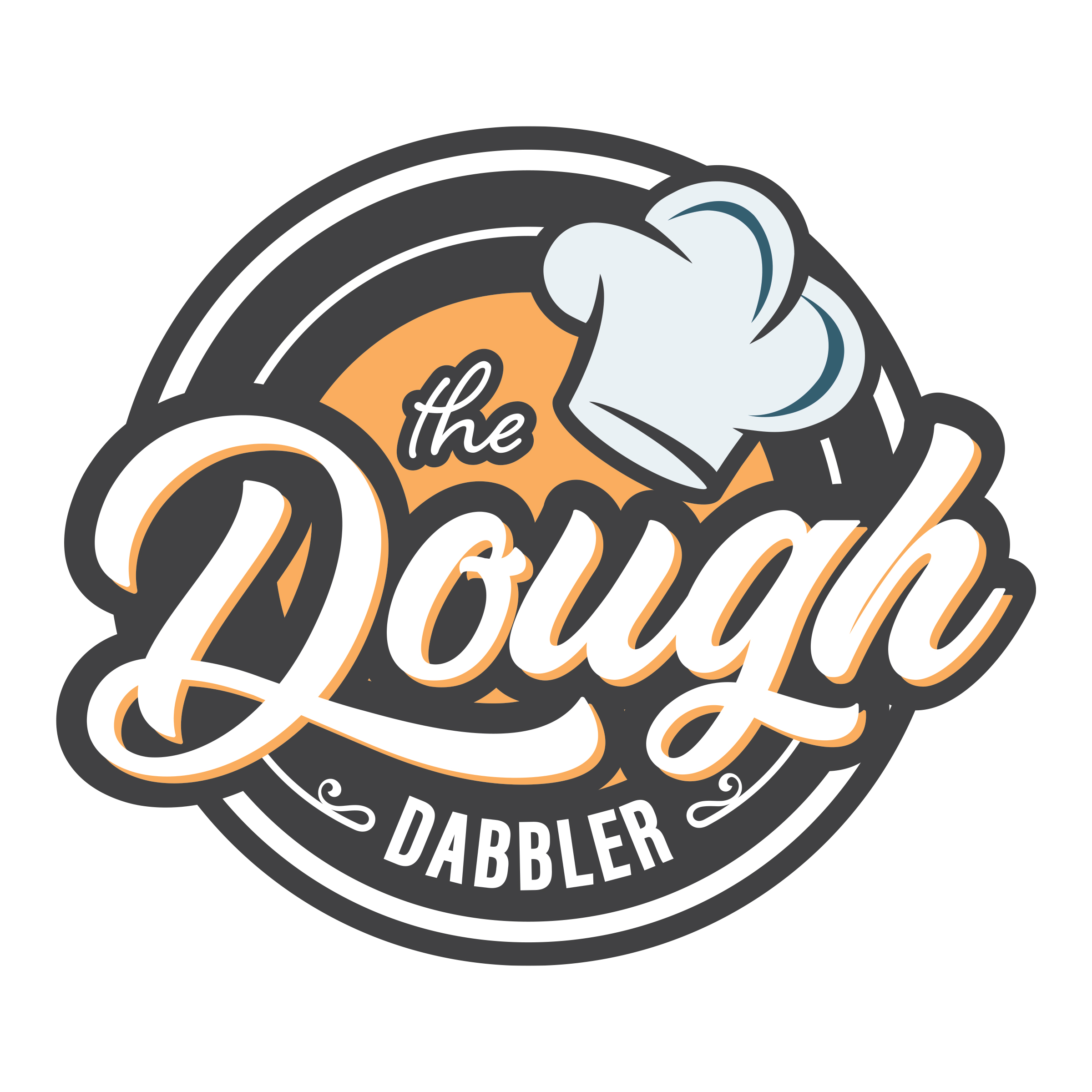



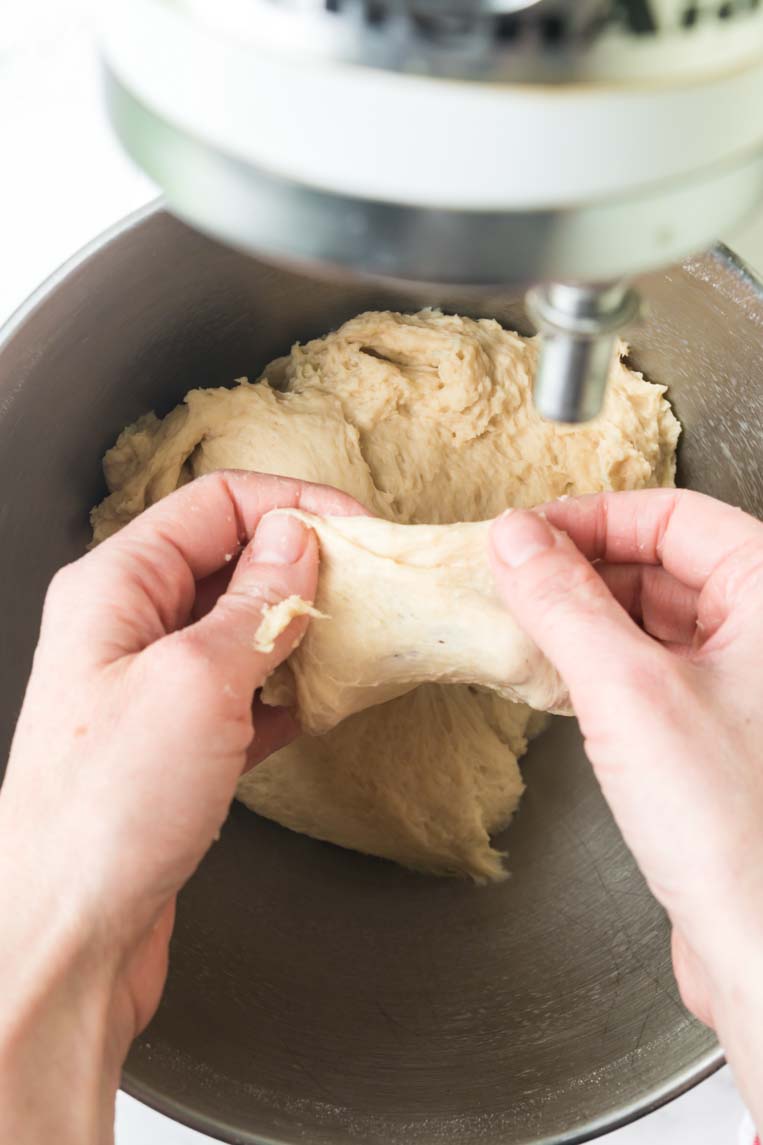
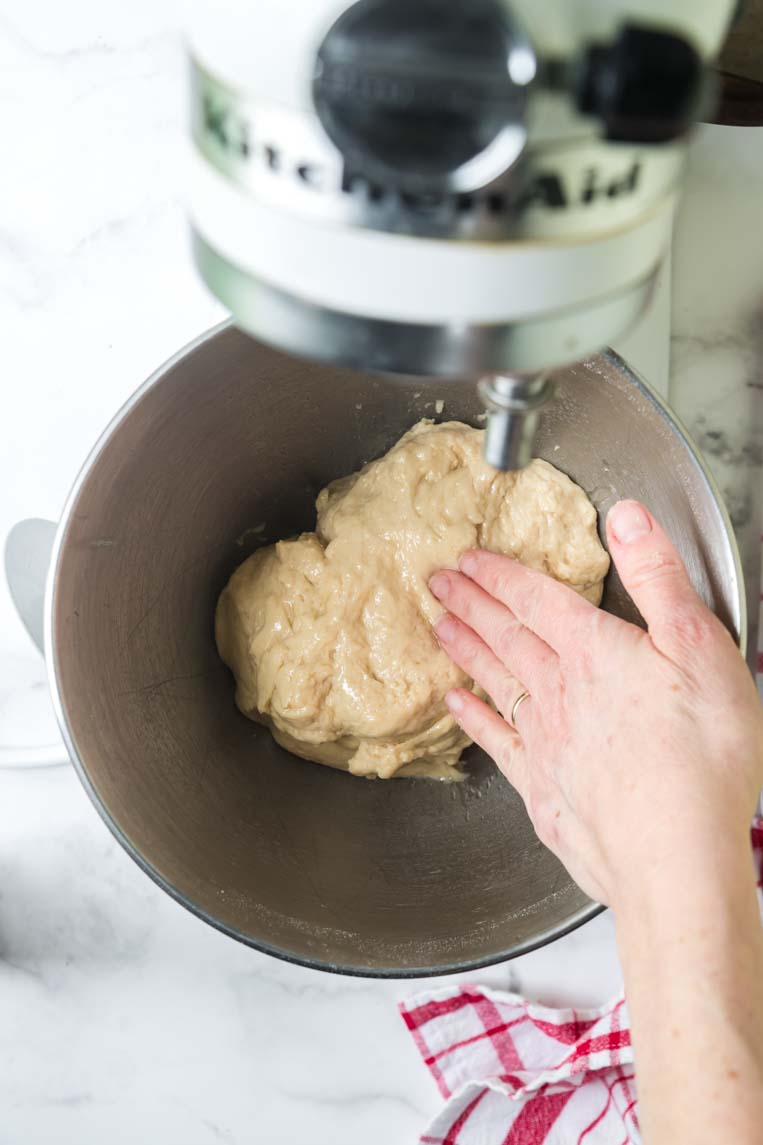


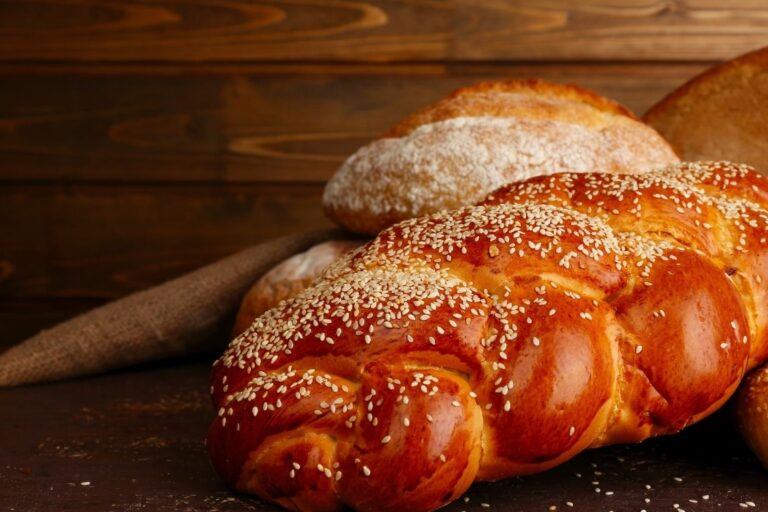
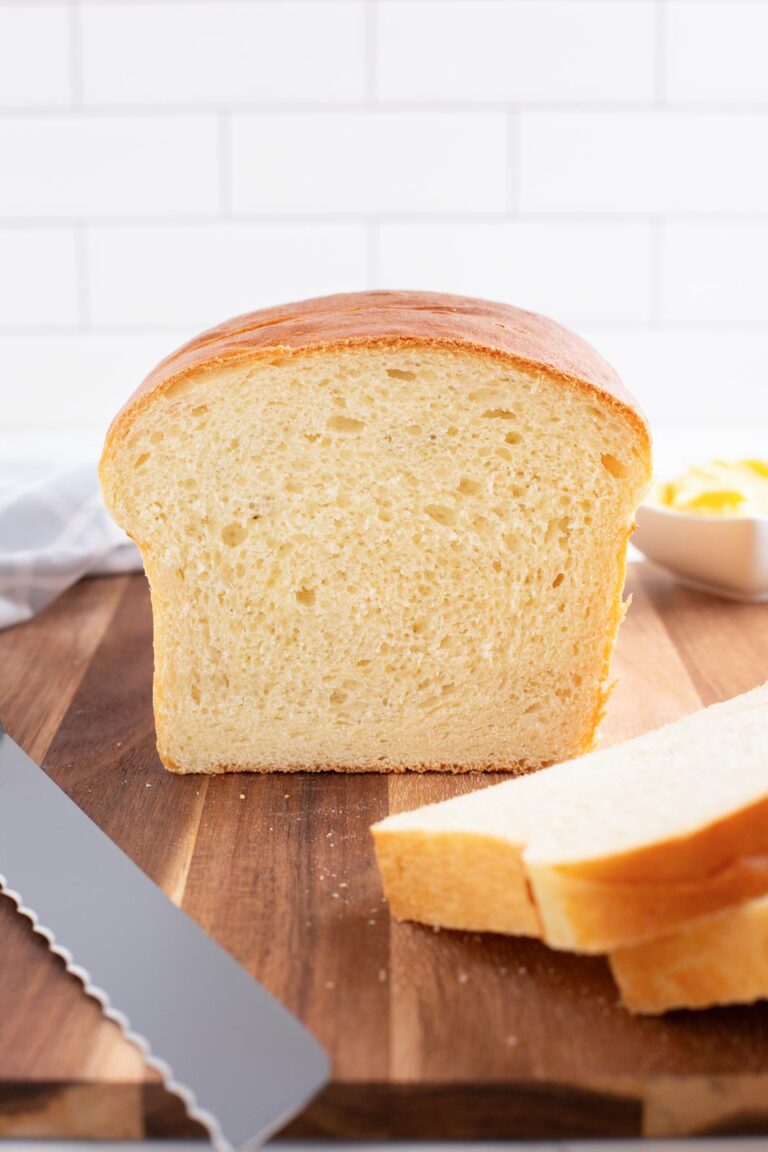
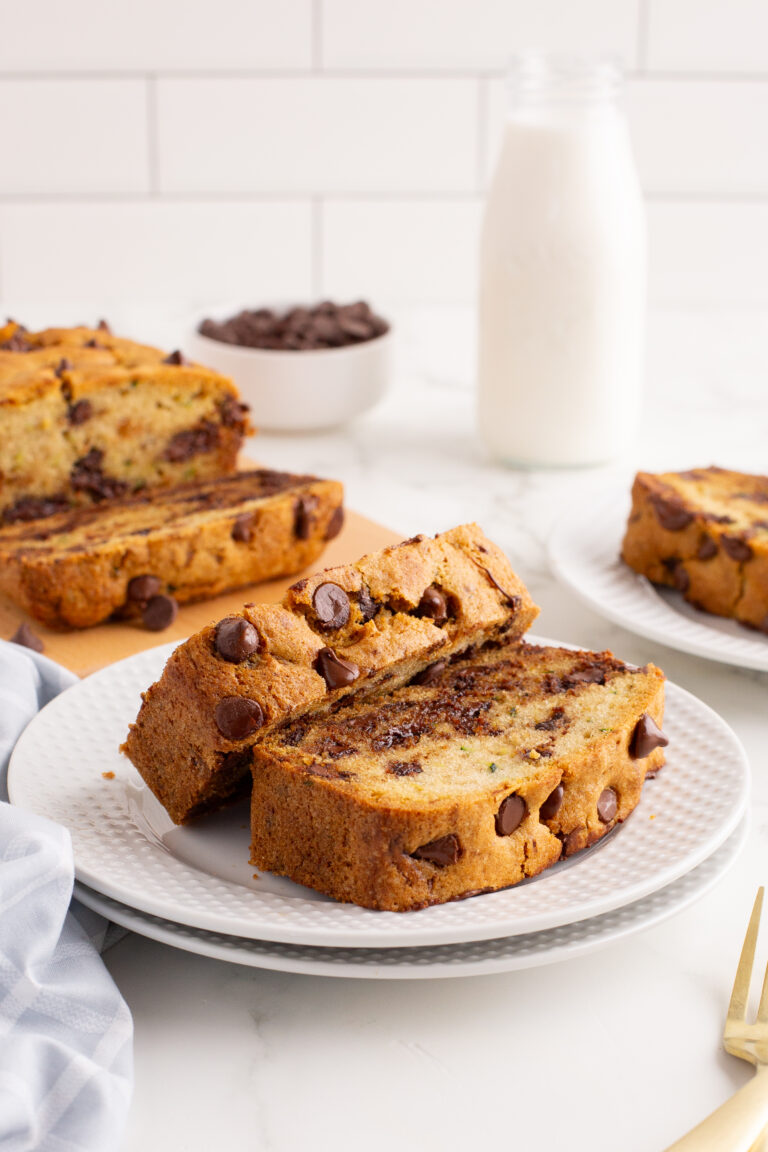
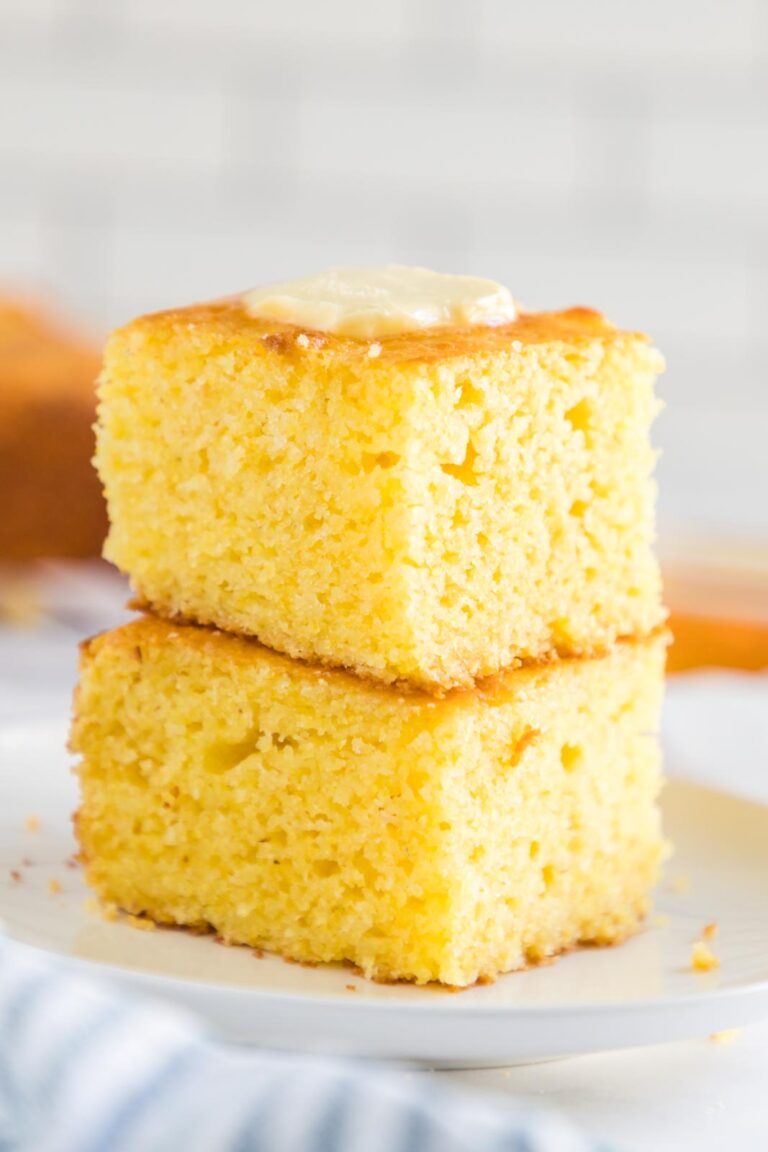
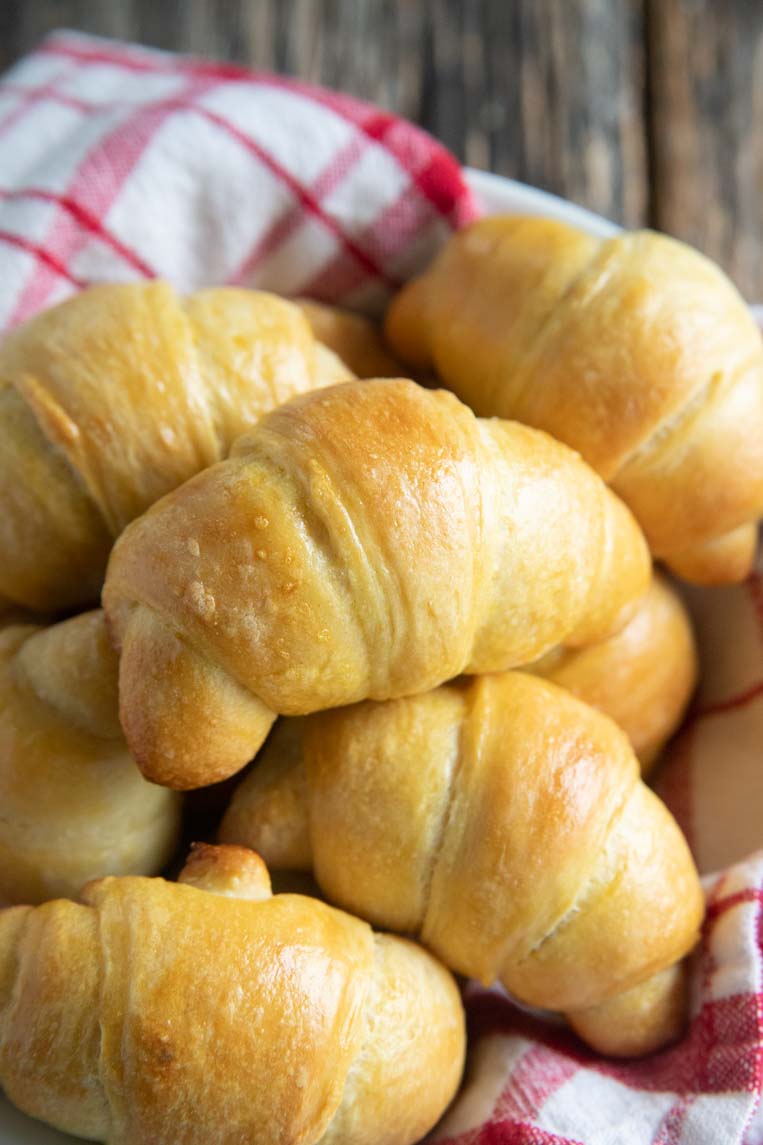

I made this yesterday and couldn’t believe how well it turned out! The 2nd rise had me a little worried because it was uncovered and my oven was slightly warmed beforehand (to about 80ish degrees F) to help it rise quicker. The top felt kind of hard after about an hour so I thought I accidentally had the oven too warm or it dried out the dough. After baking it exactly like you said to, I was blown away by how golden brown the crust was without anything being brushed on prior to that. The additional butter on the crust right after it came out of the oven really did help the crust stay soft (I waited to leave this comment until today to see what the bread looked like 24 hours later). This recipe is officially being added to my favorite collection! Thanks for sharing it!
I’m so glad you enjoyed it Steff! I hope you’ll enjoy this recipe often!
I was wondering why the sugar is not added to the yeast at the start? as other recipes I have seen do that for the yeast to proof.
Hi Sonia, Yeast strains that we buy commercially today are vigorous enough that adding sugar to the yeast isn’t really necessary. You can take part of the sugar from the recipe and use it if you want to, but it will activate with or without it. –Rachel
This is the best loaf I’ve made. New kitchenaid owner.
I’m so glad it worked out well for you Deanna!